
What a strange title, you might think. While there are plenty of bodacious babes in Bohemia, real and sculpted,

the title was chosen for the other, original meaning: remarkable, noteworthy, admirable. The name Greater lands of Bohemia harken to the Czech royal past and is a much nicer moniker in my view, than the new, very unfortunately renamed Czechia.
Mention Czech Republic and immediately Prague comes into play. Or “Golden Prague”, as my grandmother used to call it.

As a poor factory worker she couldn’t travel, but she did get to Prague as a young woman, participating in a big Sokol gymnastic stadium exhibition.
Certainly Prague is golden when it comes to capitals of Europe and the world. Glitter of gold can be found on shiny roofs and spires, the mosaics and paintings on facades of palaces and townhouses.

If one has more than a few intense Prague days to allocate to exploration of Lands of Bohemia, there are a number of well preserved castles on hand.
All in all over a thousand were built, but of many only a few stones remain.
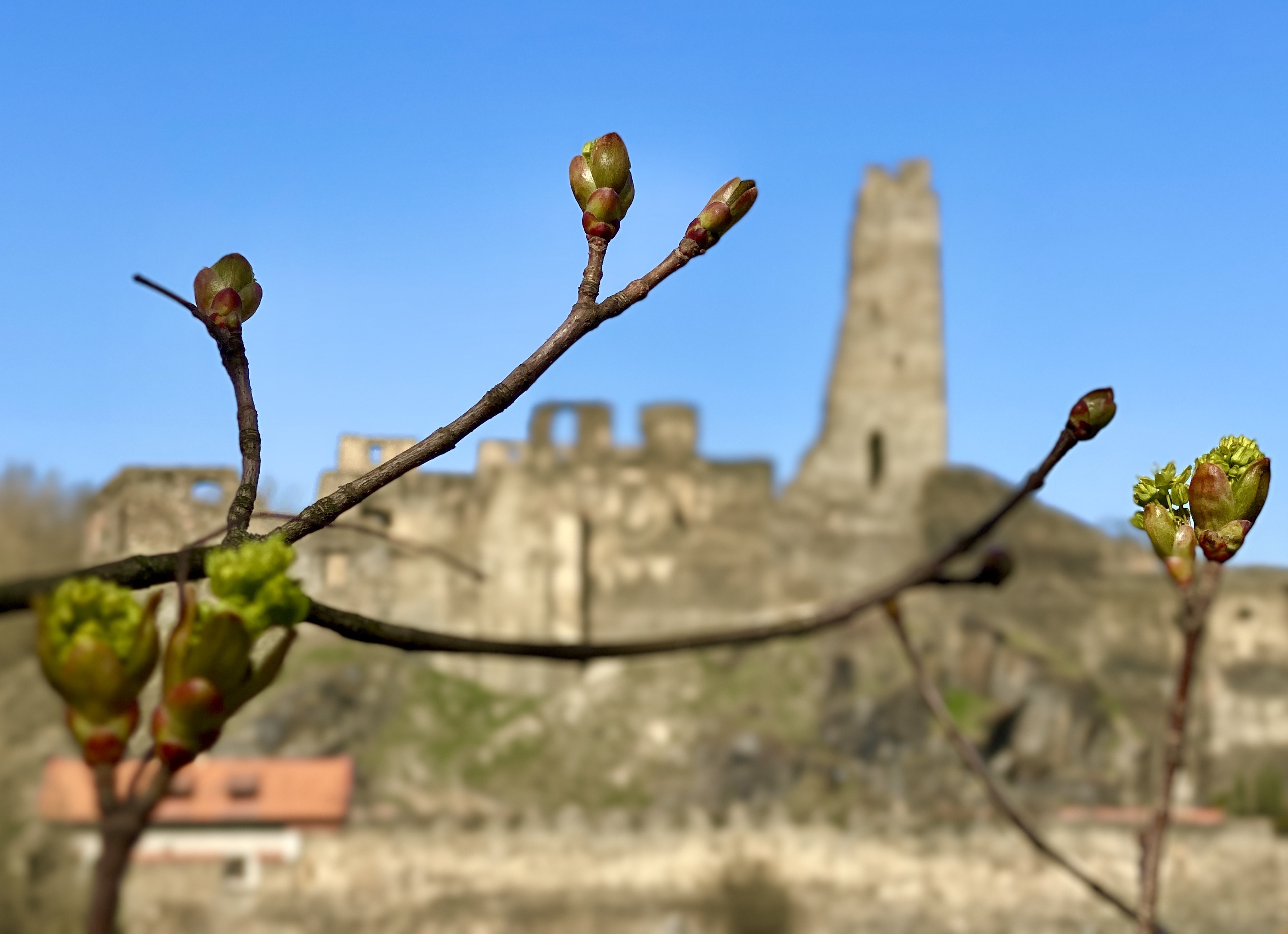
Another thousand chateaus in different state of disrepair dot the countryside.

Then there are smaller, provincial towns with well preserved historical centers like Česky Krumlov, which we extolled in our post “Photo Interlude of a Fairytale Medieval Town”.
But when you are stuck for two months, like we have been during this Corona time, in desperation you cast your net wider and you scratch deeper. Compared to our fellow travelers stuck in places with tight restrictions, we were very lucky and quite free to explore.

We drove all over tarnation and discovered many new things. We especially enjoyed finding little gems of Czech vernacular architecture. Ok, I haven’t meant for this post to be a linguistic lesson, but here goes:
“Vernacular architecture is architecture characterized by the use of local materials and knowledge, usually without the supervision of professional architects.”
I have always loved and admired the skill and design esthetic of indigenous people all around the world,
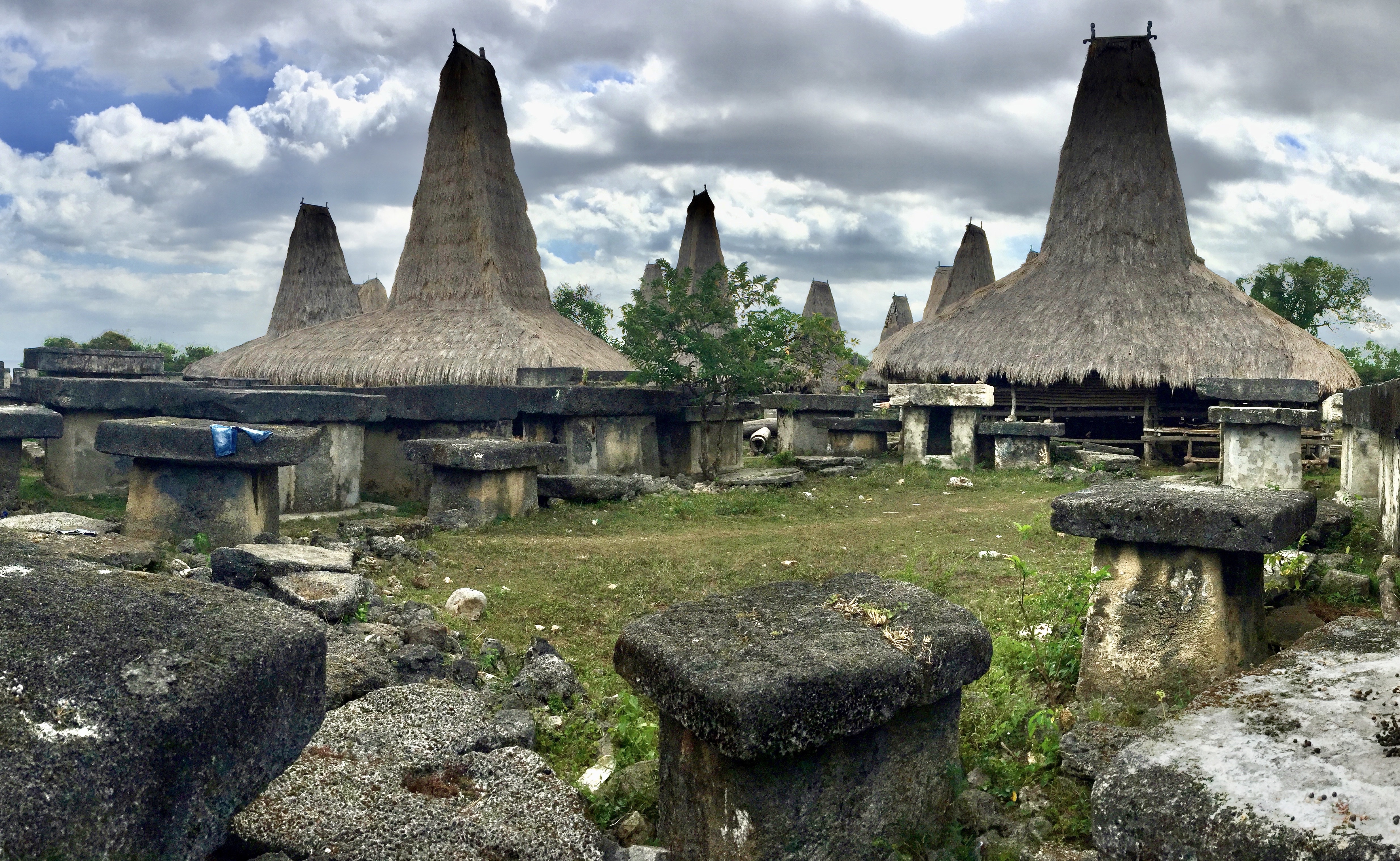
who could and in some cases still can take local materials at hand (stones, bamboo, timber, grass,) and build without any advanced technology simple, useful, yet esthetically harmonious and pleasing structures.
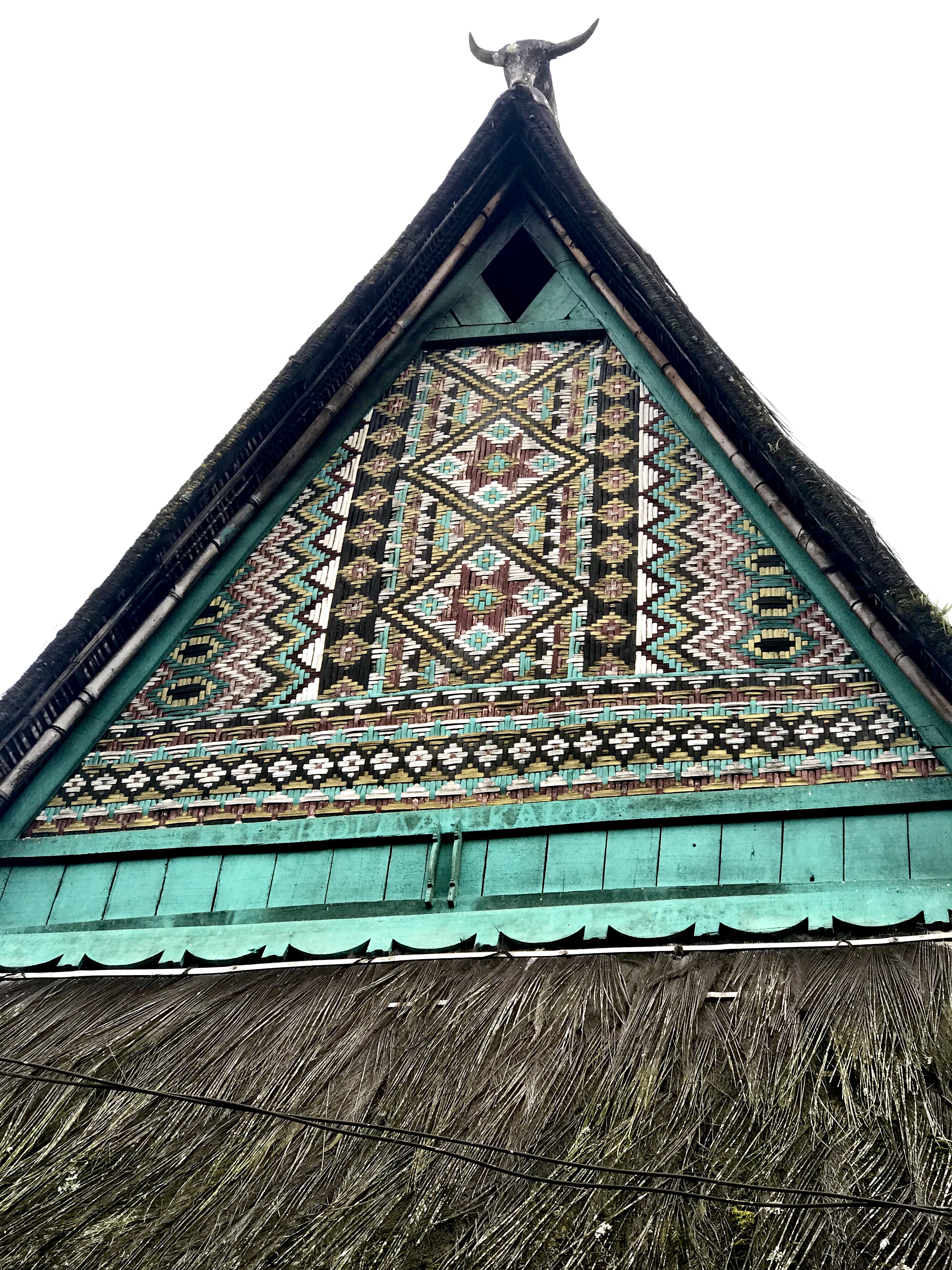
It is as if by living with nature they absorb the perfection of Nature’s creative hand and automatically build in the same vein. Have you noticed that no matter how strong the colors or phantasmic the designs in nature, they are always perfect and pleasing to the eye?

It takes people removed from nature, studying in concrete buildings of modern universities, toiling in ugly glass cubicles to come up with architecture that my husband calls “fist in the eye”, which is even stronger than the official translation of “sticks out as a sore thumb”. Staying away from the concrete and glass monstrosities that are inundating modern cities, we can’t believe the ugliness of many contemporary homes. The windows scattered willy-nilly on the facade, the ridiculous roofs and poisonously green or yellow or pink colors, clashing with green grass and blue sky.
Lest this becomes a ranting treatise of a frustrated art historian (yes, me), let me switch focus to our lovely local discoveries.

Driving slowly through backwater villages we found plenty of charming, well preserved cottages, now mainly used as weekend homes for city folks.

These simple, yet attractive black and white “roubenka” log cabins were all made by hand from more or less hewned logs.

I like to call them “zebra houses”.

Some of these can hardly be called cottages. In the very north there were quite prosperous farmers that expanded them to large family and cattle dwellings.
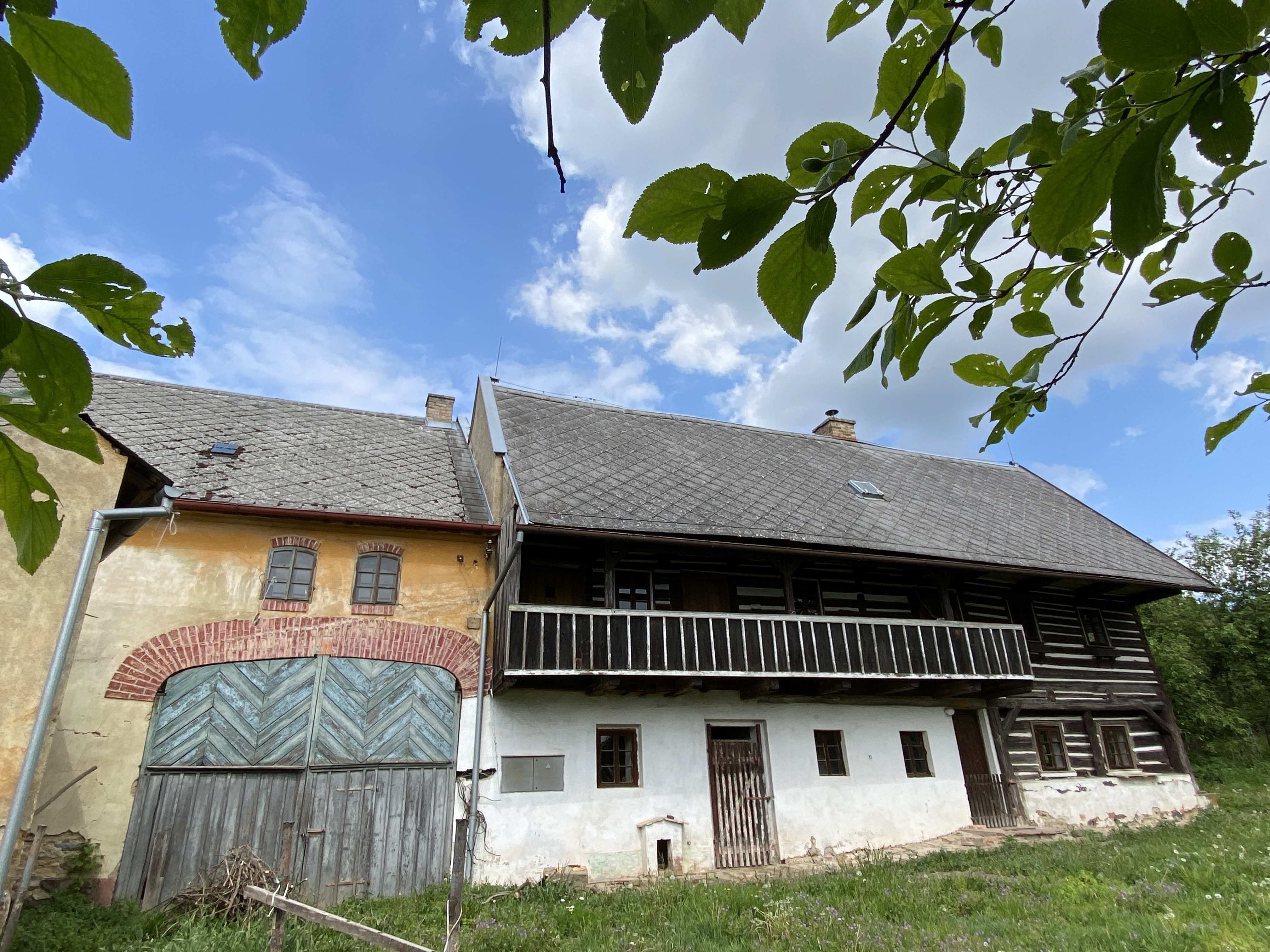
You will find care in the smallest details. Even the winter firewood is stacked just so.

I am very bold and nosy and like to peek in the little windows with lace curtains.
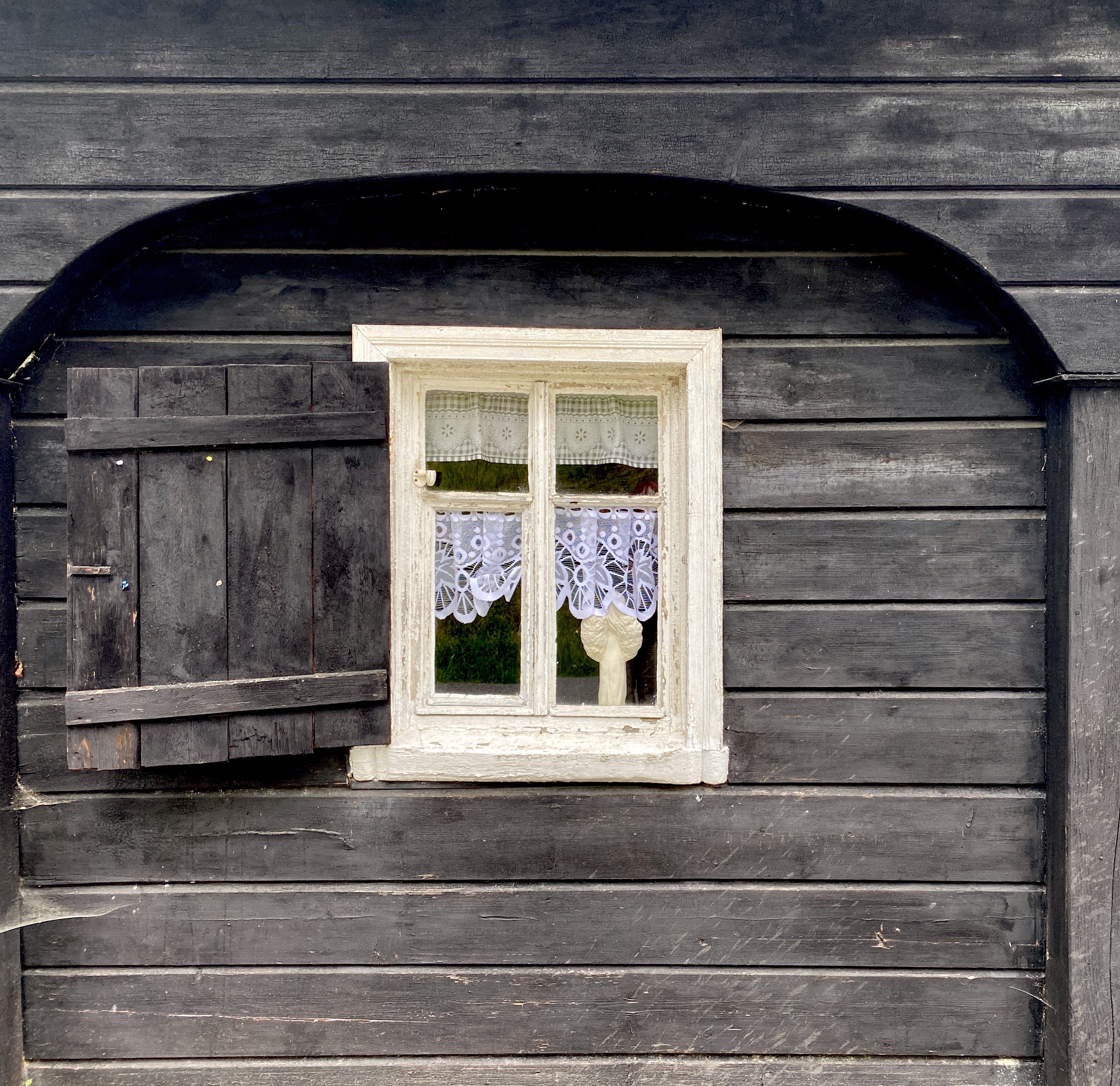
Or through the fence into the gardens

Geometry is the simplest way of decoration and it is fun to see how in the same village not two designs will be the same.
From very simple

to more elaborate

to more colorful
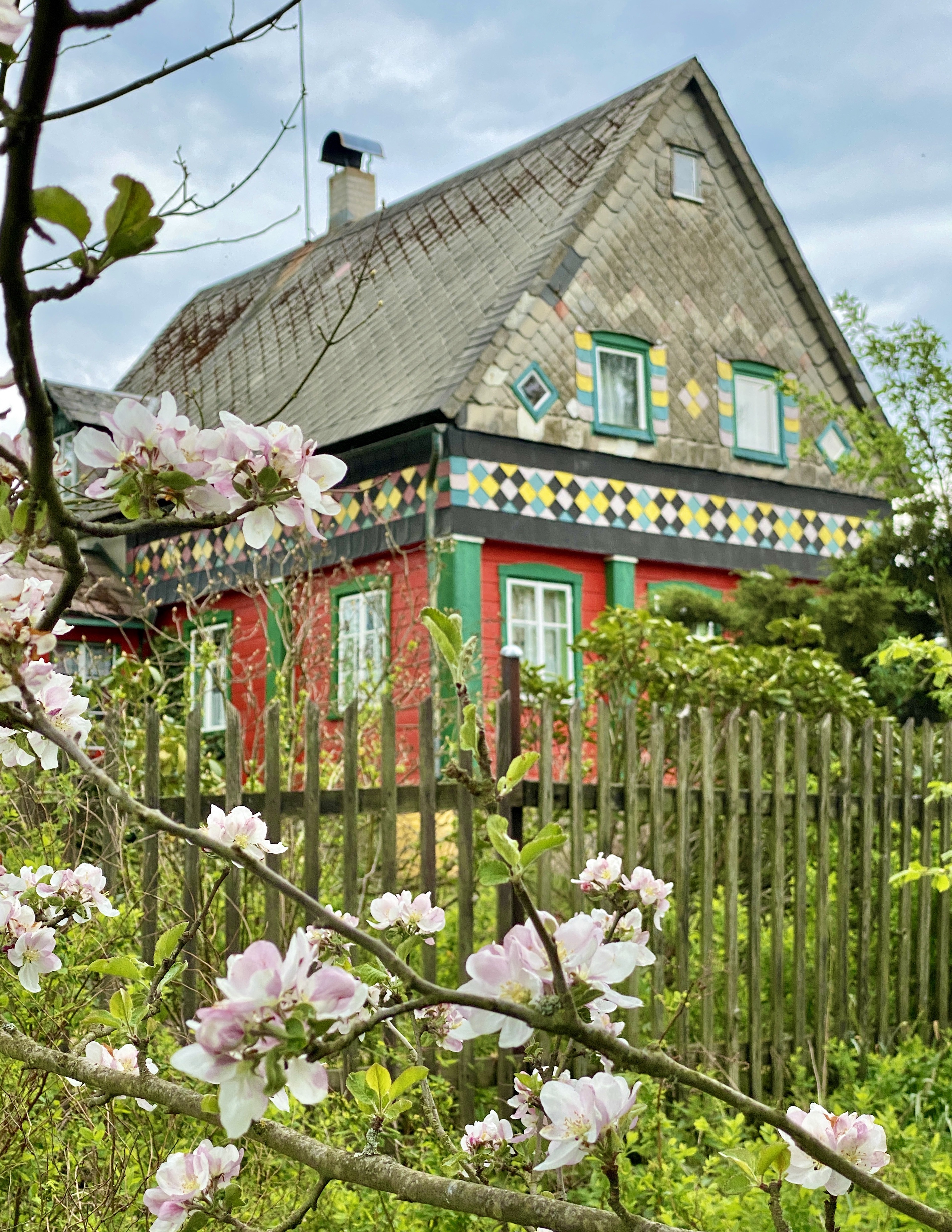
In the South a special style called Southern Czech baroque was developed and some house are downright bodacious. 😉

In the village of Holašovice the whole village square is beautifully restored and each house is slightly different and in different color combinations.

All are in gentle pastels


Except for this fire engine red door. Sore thumb and all.

In the middle of the village green is a tiny church

And like in every southern Czech village, “a kachnak”, a duck pond where carp and ducks coexist.

And where you have a pond you also have a “vodnik” – a water goblin. Parents will warn their children not to go anywhere close to the pond or the green water goblin will pull them in.

He is said to keep the souls of drowned people under the upturned cups.
There is a tradition of putting old cups on top of the fences in Czech villages, but for the life of me I can’t get anyone to explain to me why and if it has anything to do with the green vodnik.
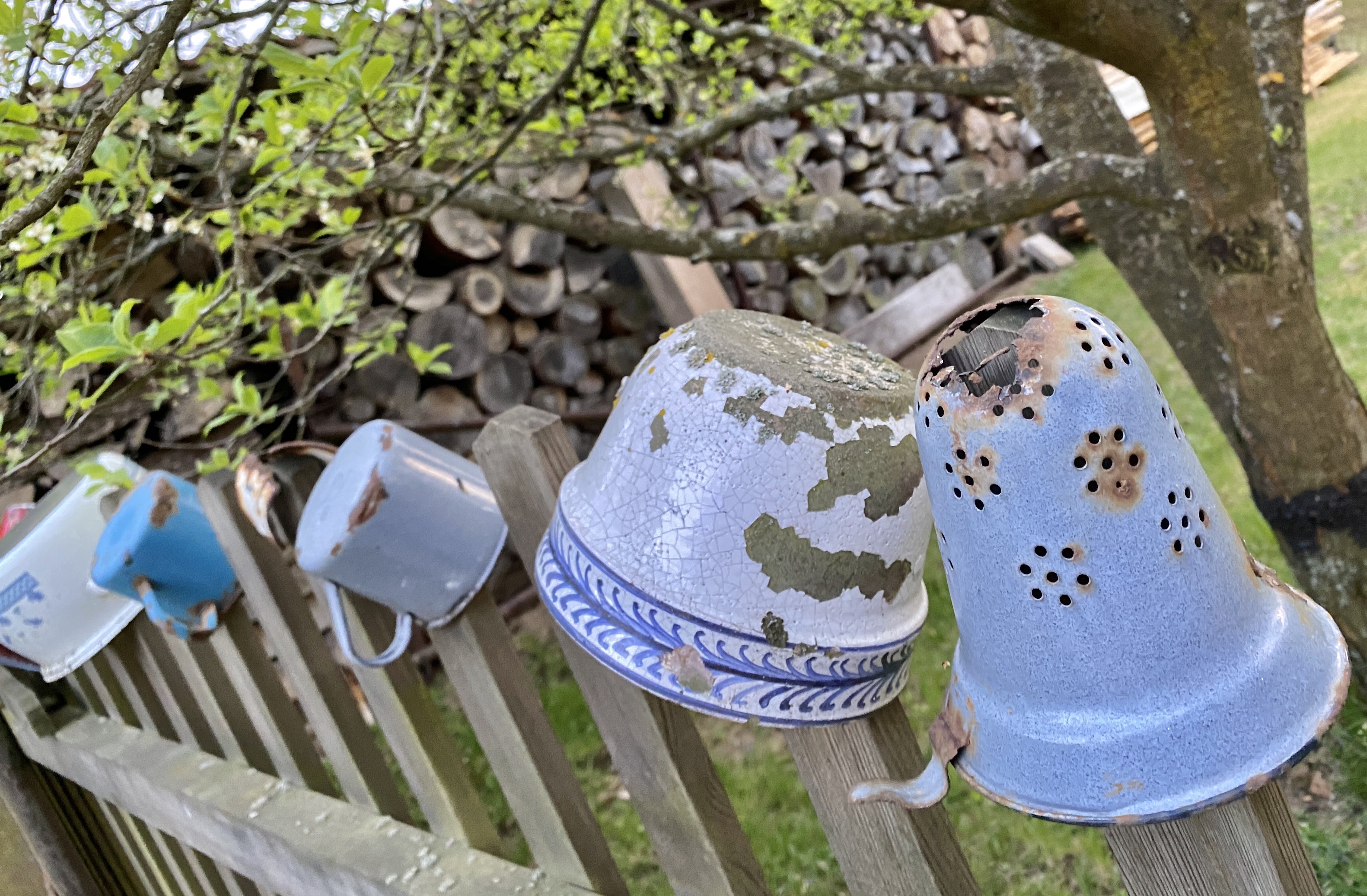
It is cool to see the foundation dates marked on the houses and imagining the many successive generations that lived under the roof.

Oh, and if you are like me, you might be curious about the really important design feature of very house – the place where, as we say here, even the emperor goes by his own two feet.
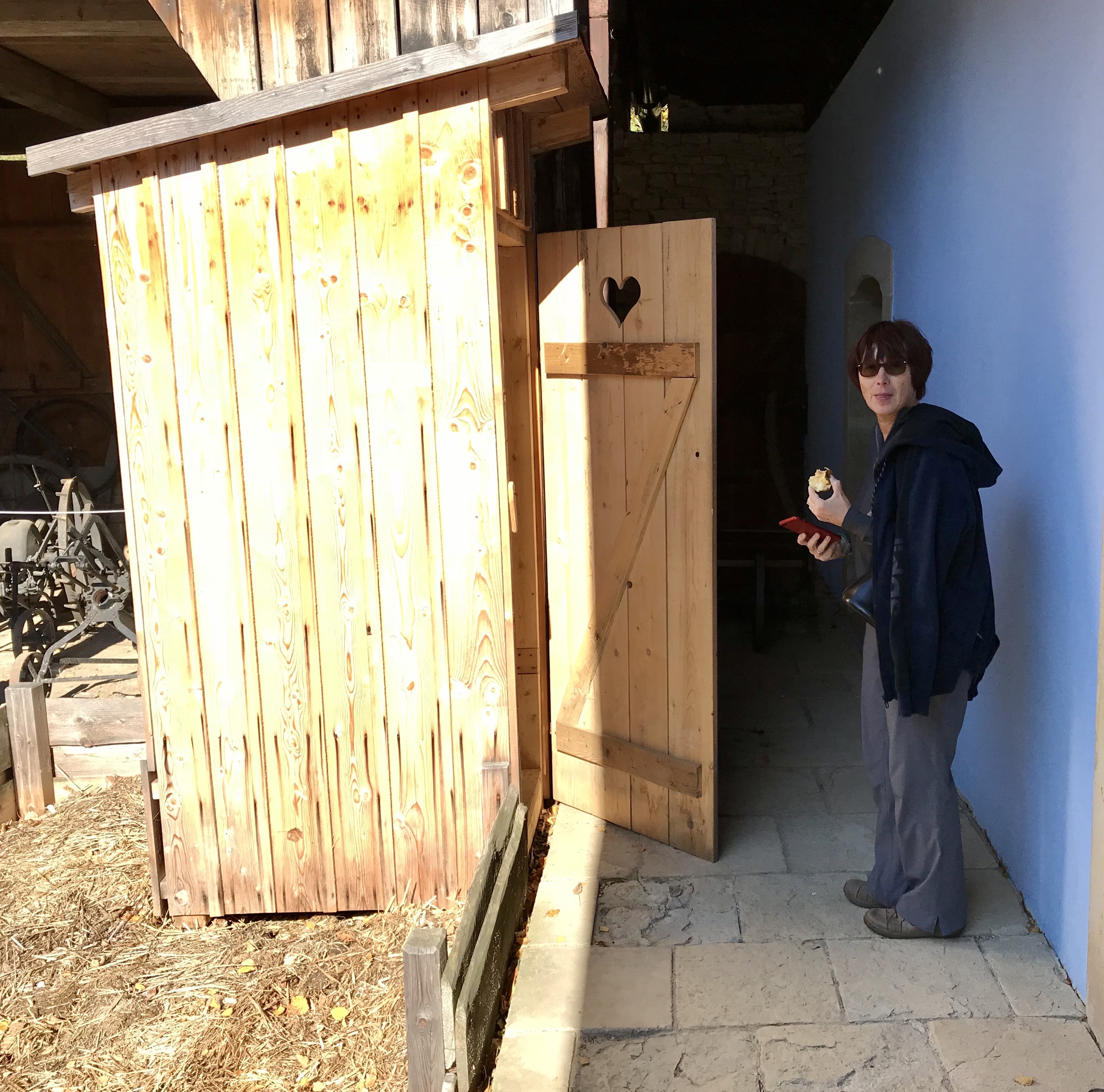
And here is the inside of the outhouse.
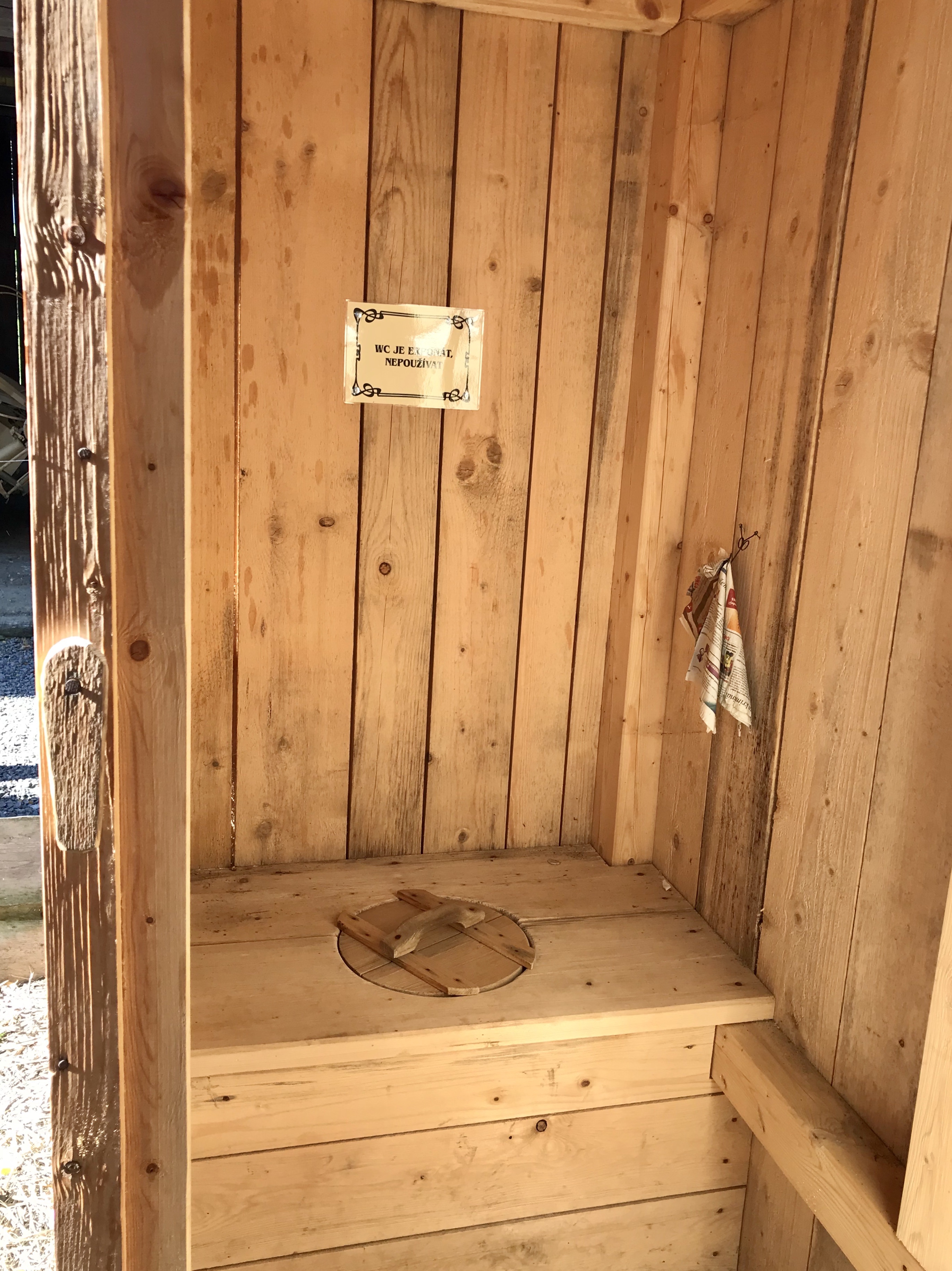
In one od the future posts, I promise to finally get to the special Toilet Signs post. I have been collecting photos of the signs from all over the world and can’t believe the creativity of people. There are a myriad of ways to say Woman and Man in pictographs. And I have at leas 99 pictures to prove it.

Bodacious is the correct word for your Bohemia posting. Love the Icarus wings on Ksenija and all the doors of the square.
LikeLike
Hope not Icarus, his didn’t work out for him that well, if I recall!
LikeLike
Great to see a post from you again! I was thinking of you! I truly enjoy this post – so close to me: must check it out myself! Stay safe! And continue having fun!
LikeLike
We’ll be on our way through Austria in a few weeks. Sure hope they will let us through! Fingers crossed.
LikeLike
Love following your adventures and insights while I shelter-in-place at home. You all seem to feel so free! I am delighted for you!
LikeLike
Yes, we are lucky. Hope there is an end in sight for you guys, soon!
LikeLike
Such exquisite photos…thanks for traveling for us.
LikeLike
You are welcome. Any time with much pleasure.
LikeLike
If we ever get to travel again and we ever get to visit Prague, I wan you as my tour guide!
LikeLike
Haha, if I am there, with pleasure.
LikeLike
And yes, we will travel again, Val! We already bought tickets to Iceland for June. So excited!
LikeLike
Hi Ksenija,
You are so fortunate to be traveling! This is day 60 of hibernation for us.
Did you know that John’s Mother was Bohemian? Her last name was Bohac. She and her family (in the Cicero area of Chicago) continued to speak Bohemian and it drove his Dutch (Freis) father crazy.
Gail
LikeLike
Of all people I know you understand one has to feed the beast. How nice to know that your mother was Bohemian. Do you know what her last name means? It is originally spelled Boháč and means “Rich”! I hope you inherited your mom’s longevity genes!
LikeLike
Loved all the little colorful houses. How did you get from SA to Bohemia? Large crop of Slovenian lettuce in our garden this year.
LikeLike
Margaret, we flew from Buenos Aires to Istanbul and then Prague two months ago. Hope you also have your amazing cherry tomatoes in the garden to go with the salat.
LikeLike
Bravissimos Ksenija and Mirek! We always enjoy traveling with you, especially showing many sights us ordinary turistas are not likely to see! Stay heakthy, keep traveling!
Cambodia Cookie
LikeLike
If anyone, you would be keen to find the out of the way and less ordinary. I remember well your fabulous Balkans itineraries. Always love to hear from you!
LikeLike
Bravissimos Ksenija and Mirek! We always enjoy traveling with you, especially showing many sights us ordinary turistas are not likely to see! Stay heakthy, keep traveling!
Cambodia Cookie
LikeLike
I loved all of the pictures of the different homes. It’s fun seeing the countryside through your eyes. And in particular Czech Republic because my Dad was full Czech and one of his parents was born there. We haven’t visited, but hopefully, someday.
LikeLike
I didn’t know that, Sandy. Funny how many Czech ancestors are coming out of the woodwork amongst our friends.
LikeLike
Picture postcard lovely. Springtime must give an added dimension to the beauty. Thank you again. I look forward to the toilet sign issue….being a wastewater engineer and all!!!!
LikeLike
Alison, working on it as we speak. So much fun!! Not that much fun when you are looking for one.
LikeLike
Lovely architecture. Especially the out house. 😃
Seriously, I enjoyed being taken on a tour of the countryside through your eyes and learning some tidbits along the way.🤗
LikeLike
Such an important part of the life-the the outhouse. when I visit a castle I always want to know where the toilet was for all those people.
LikeLike